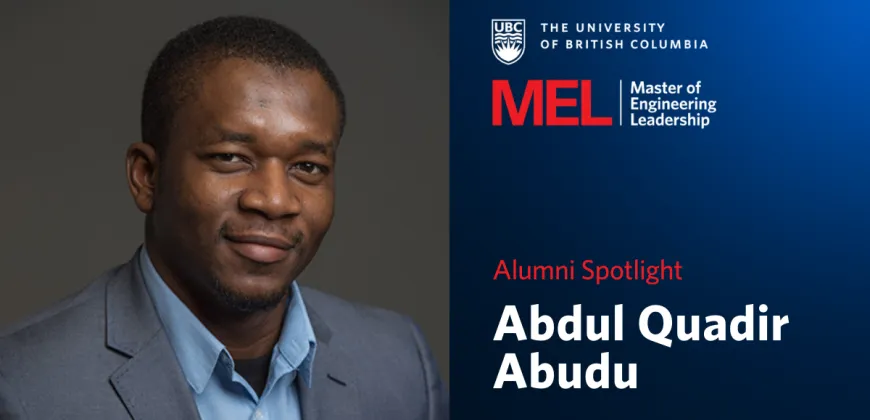Alumni Spotlight: Abdul Quadir Abudu
After six years in the maritime industry, Abdul decided to pursue an MEL to expand his technical knowledge and deepen his understanding of business strategy and concepts.

“I grew up in the port city of Lagos, Nigeria, where I was surrounded by ships and developed an early interest in pursuing a career in the maritime industry,” says Abdul Quadir Abudu. After moving to Ghana to complete a degree in marine engineering, he worked on tankers and cargo ships as an engineer for three years. Abdul attained his third engineer certification and although he initially intended to go back to sea, he accepted a position as a fleet-in-service surveyor for DNV GL in Lagos. “This gave me great exposure to different kinds of ships, ship construction and design,” he says. “In the process, I identified gaps in my knowledge about ship design that I wanted to fill.”
The Master of Engineering Leadership (MEL) in Naval Architecture and Marine Engineering offered benefits he couldn’t get from a traditional master’s degree in engineering.
“The MEL appealed to me because it married the business and engineering elements of the profession – and you can’t have one without the other.”
Expanding his engineering knowledge
Abdul went into the program with a desire to deepen his technical knowledge in areas that were most relevant to his experience and professional goals. “I knew the areas where I wanted to dive in and acquire specific information,” he says.
His years of experience on and around ships were very beneficial, giving him first-hand knowledge of how ideas discussed in the classroom apply to real world environments.
Immersing himself in business concepts and sustainability issues
Abdul says the four-week summer “business summer camp” was a highlight with its high-level overview of core business concepts. He was particularly interested in the discussions around change management.
“So many companies want to embark on a change of course, but they don’t have the organizational structures in place to do so, which means their projects are doomed to fail. I’ve been on the back end of several corporate shake-ups, so I know how people can react negatively to change. The class broadened my point of view and showed me ways that companies and managers can successfully implement change.”
The sustainability and leadership class was another highlight. Through case studies, research projects and group discussions, Abdul says he came to the realization that when it comes to sustainability, “at the end of the day, if we don’t speak out, we stand for nothing.” All business leaders must look for ways to make decisions that generate profits but also benefit people and the planet.
Hired as a marine engineer lead while still in school
Abdul was hired as a marine engineer lead with Alion Science and Technology Corp., a principal contractor of Seaspan Vancouver shipyard under Canada’s National Shipbuilding Procurement Strategy that is building the joint support ship for the Royal Canadian Navy. At Alion, he’s managing a team of seven and overseeing the development of specifications and drawings for system-functional and detailed design products.
“We’re making sure the navy’s requirements are addressed in the design and review stage and reviewing the footprint to see how decisions affect other elements – ensuring, for example, that it can still meet all key performance requirements. My job is to identify issues and bring them to the attention of our client so that they can decide how they want to move forward.”
Looking back on the 12-month MEL program, Abdul says that prospective students should know that although it’s an intensive and challenging program, if you enter it with specific goals in mind and have good time management skills, it’s an excellent investment in advancing your career.
–
Take the steps to join the next cohort of engineering leaders. If you haven’t already, assess your eligibility and sign up for the upcoming information session to learn how to submit a strong application. Learn more about this innovative master’s program:



